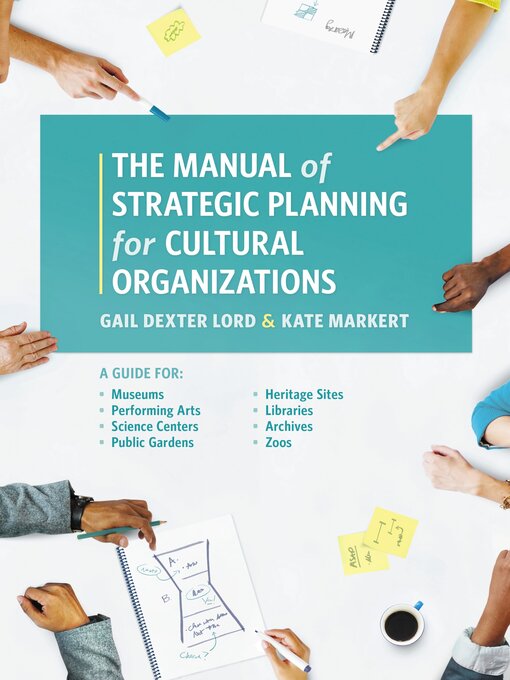- Advocacy & Activism
- Collaboration & Partnerships
- Corporate Giving
- Diversity, Equity & Inclusion
- Finance & Accounting
- Books for Funders
- Fundraising
- Grants & Proposal Writing
- Human Resources
- Individual Giving
- Individuals Doing Good
- Innovation
- Marketing & Communications
- See all ebooks collections

Leadership change. This chapter explains the role of strategic planning when an institution is going through the process of hiring a new director. A question we are frequently asked is "Should the strategic plan precede the search process or should it wait until the new director takes up the position?"
Institutional change. Increasingly, cultural organizations are going through major change: from public-sector agencies to nonprofit corporations; from private ownership to non-profit status; from nonprofit status to a foundation, and many other variations. This book addresses the role of strategic planning during these transitions.
Staff empowerment. This manual addresses the opportunities for staff at all levelsto grow by participating in strategic planning. This edition focuses on how to engage and empower staff.
A Guide for Museums, Performing Arts, Science Centers, Public Gardens, Heritage Sites, Libraries, Archives, and Zoos is a game-changing book with broad reach into the cultural sector, while still serving the museum community.
-
Creators
-
Publisher
-
Release date
March 17, 2017 -
Formats
-
Kindle Book
-
OverDrive Read
- ISBN: 9781538101322
- File size: 9980 KB
-
EPUB ebook
- ISBN: 9781538101322
- File size: 9980 KB
-
-
Accessibility
No publisher statement provided -
Languages
- English
Why is availability limited?
×Availability can change throughout the month based on the library's budget. You can still place a hold on the title, and your hold will be automatically filled as soon as the title is available again.
The Kindle Book format for this title is not supported on:
×Read-along ebook
×The OverDrive Read format of this ebook has professional narration that plays while you read in your browser. Learn more here.